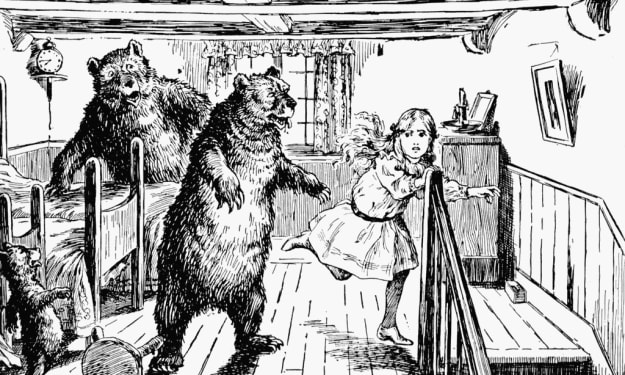
The Andaman Islands, consisting of more than 300 islands, large and small, are located in the Bay of Bengal and the Burmese Sea. 26 of the many islands are inhabited.
In these islands, some of them still live primitive indigenous, they are isolated from the world for more than 60,000 years, still in the Stone Age, and reject the integration of modern civilization, once they find outsiders landing, they will take up weapons to resist, and even kill.
And the local government acquiesces, they are not guilty of killing, and will not do justice to you, what is going on here?
Andaman people
The islands of Andaman Islands are not uniform in size, some of them have a very large land area to meet human life, and some primitive indigenous people live here, they are Sundanese.
The Sundanese are not a group, but several ethnic groups, including the Anger, Galois, and Sentinel. The indigenous people living here still retain the habits of the Stone Age, have not developed agriculture, and still live a life of gathering and hunting, using tools such as spears and bows, and arrows, although they use iron, the iron used is obtained from the outside world, such as outside shipwrecks.
Different peoples live on different islands, different languages, different customs, and different views of the outside world. But what is the same is that they are all very dark, small in stature, and know almost nothing about modern civilization, even the use of containers to cook food is only learned in the last 100 years, and cooking is still very new to them.
They hunt fish, collect bird and turtle eggs, and climb trees to collect honey, and when they apply a plant liquid to their hands, the bees do not sting them.
The study found that they should have come to the Andaman Islands after Homo sapiens came out of Africa and lived here for nearly 60,000 years, during which time they rarely interacted with the outside world.

In the 18th century, British colonists came here, and they brought viruses such as smallpox, syphilis, and tuberculosis to the local natives, in addition to forcing their way into the world of the Andaman natives with guns and shells.
Because of their long isolation, the Sundanese had no resistance to some common pathogens from the outside world, and some very common pathogens caused their death. The arrival of the British colonists led to a sharp decline in the number of local natives.
Except for North Sentinel Island, where the natives resented the intrusion of outsiders and would put up fierce resistance, all other indigenous populations were left after this period, and some had even disappeared altogether. According to the 2011 census, there are only 44 Andaman, 380 Garrotes, and about 50-150 Sinai, which are difficult to count.
The Sentinel
North Sentinel Island is inhabited by the Sentinel, who are also the most xenophobic of the local indigenous people. As early as the 1960s, India tried to get closer to the Sentinel people on North Sentinel Island.
In 1967, Indian anthropologist Bandit and 20 other people, including local government officials, police, and the navy, came to North Sentinel Island, which had about 80-100 inhabitants at the time. This time they were lucky enough not to encounter the Sentinel, so they were able to land and check out the house where they were living along the path and found it still had a fire, with roasted fish and fruits, etc. There were bows and arrows and spears all over the floor, as well as some hand-woven baskets.
They only took some bows and arrows and spears and left them coconuts, metal containers, plastic containers, etc.
After that, he visited North Sentinel Island several times but encountered the Sentinel, who protested very fiercely every time he approached them.
Bandit and others took a different approach to approach them, bringing some gifts each time, and gifts that the other side liked, and then walking away after putting them down, expressing that they had no ill will.
Finally, in 1991, the Sentinel allowed them to approach and took the coconuts from their boats, except that the Sentinel still did not allow them to board the island.
But after that, the attitude of the Sentinel towards outsiders took another sharp turn and no longer allowed them to come near. The Indian government also changed its attitude towards the natives and decided not to approach them, but to designate the area where they lived as a "no-go" zone so that even the Indian Navy could not come too close to North Sentinel Island. However, people still defied the ban and were attacked by the locals.
In 2006, two fishermen were killed by locals in their sleep and their boats were destroyed when they mistakenly entered North Sentinel Island.
In 2018, an American pastor attempting to preach on the island was shot dead on the beach by locals, and Indian officials surprisingly did not even guarantee to get the pastor's remains back.
The reason India designated North Sentinel Island as a "no-go" zone is to protect people from attacks by local indigenous people, but also to protect them. The resistance of the natives to external germs is so weak that an epidemic disease would kill them all.
No reproductive isolation
Apart from the Sentinel, other natives are not as wary of outside civilization, but not as serious, and some are still willing to deal with it, and this includes the Groves.
Unlike the Sentinel, the Kangaroos are not as wary of outsiders and even live in the same area as them, except that they live in a 300 square mile forest with a "buffer zone" around it, where people from outside are forbidden to enter the Kangaroos' habitat.
However, the Kangaroos live too close to modern people, there are not only roads but also other people living here, even the Kangaroos often break into the villages of local people and take all kinds of things, while the police do not treat the Kangaroos as criminals because this is their way of life.
In general, the Kangaroos are conservative and do not have close contact with the outside world. They still retain their way of life, cultural customs, dress, language, etc.
Because the Kangaroos are not as fiercely xenophobic as the Sentinel, it has also led to some Kangaroos conceiving children from the outside world. One of them was in 2015 when a Gar ova woman gave birth to a child whose skin color was lighter than the locals, indicating that he was the offspring of an outsider.
And the Kangaroos would never allow their people to conceive an outsider's child, so the locals chose to kill the baby, and although the police knew who the murderer was, they could not punish them because they could not interfere with their customs and rituals. But the man who violated the Kangaroos was arrested because he was not a Kangaroo and the local laws applied.
The fact that something like this plays out in the area from time to time, besides showing that the Kangaroos are still in communication with the outside world, also shows that these people are not re productively isolated from us, even though they have been isolated for about 60,000 years.
The process of dealing with outsiders, represented by the Kangaroos, has also had a very negative impact on the local natives, leading to an increase in the rate of alcoholism among the natives and even smoking among the natives, and bad habits are also affecting the lifestyle of these natives.
This also makes us reflect on whether it is good or bad for indigenous people who have been isolated for tens of thousands of years to deal with modern civilization.






Comments (1)
Interesting